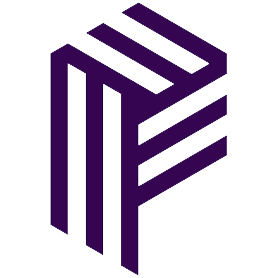Prodia and Pusher integration
Save yourself the work of writing custom integrations for Prodia and Pusher and use n8n instead. Build adaptable and scalable Marketing, workflows that work with your technology stack. All within a building experience you will love.


How to connect Prodia and Pusher
Create a new workflow and add the first step
In n8n, click the "Add workflow" button in the Workflows tab to create a new workflow. Add the starting point – a trigger on when your workflow should run: an app event, a schedule, a webhook call, another workflow, an AI chat, or a manual trigger. Sometimes, the HTTP Request node might already serve as your starting point.
Build your own Prodia and Pusher integration
Create custom Prodia and Pusher workflows by choosing triggers and actions. Nodes come with global operations and settings, as well as app-specific parameters that can be configured. You can also use the HTTP Request node to query data from any app or service with a REST API.
Supported API Endpoints for Prodia
Create generation
Create a generation for SD 1.
Transform existing image
Transform an existing image in SD 1.
Inpaint existing image
Inpaint an existing image in SD 1.
Create Controlnet generation
Create a Controlnet generation in SD 1.
Create SDXL generation
Create a generation for SDXL image generation.
Transform existing SDXL image
Transform an existing image in SDXL generation.
Inpaint existing SDXL image
Inpaint an existing image in SDXL generation.
Upscale an image
Upscale an image using the Image Upscaling endpoint.
Face Swap
Perform a face swap using the utility endpoint.
Face Restore
Restore a face using the utility endpoint.
Photo Maker
Create a photo using the photo maker utility endpoint.
Retrieve SD 1.X models
Retrieve a list of available SD 1.
Retrieve SDXL models
Retrieve a list of available SDXL models.
Retrieve SD 1.X loras
Retrieve a list of available SD 1.
Retrieve SDXL loras
Retrieve a list of available SDXL loras.
Retrieve generation
Retrieve a generation by job ID.
Retrieve list of available SDXL embeddings
Retrieve a list of available SDXL embeddings.
To set up Prodia integration, add the HTTP Request node to your workflow canvas and authenticate it using a generic authentication method. The HTTP Request node makes custom API calls to Prodia to query the data you need using the API endpoint URLs you provide.
See the example hereThese API endpoints were generated using n8n
n8n AI workflow transforms web scraping into an intelligent, AI-powered knowledge extraction system that uses vector embeddings to semantically analyze, chunk, store, and retrieve the most relevant API documentation from web pages. Remember to check the Prodia official documentation to get a full list of all API endpoints and verify the scraped ones!
Supported API Endpoints for Pusher
Trigger event
Trigger an event on a specified channel.
List channels
Query for a list of channels within an application that have active subscriptions.
Get channel information
Retrieve the state of an individual channel by its name.
Get presence users
Retrieve a list of users present on a presence channel.
Fetch info for multiple channels
Allows fetching a hash of occupied channels optionally filtered by prefix.
Fetch info for one channel
Retrieves information about a specific channel.
Trigger event
Triggers an event on one or more channels.
Trigger event
Triggers an event on a specified channel.
Trigger multiple events
Triggers multiple events on specified channels.
Trigger multiple events
Triggers multiple events in a single call (up to 10 per call on the multi-tenant clusters).
Fetch info for one channel
Fetch one or some attributes for a given channel.
Terminate user connections
Terminates all connections established by the given user.
Fetch users
Fetch user IDs of users currently subscribed to a presence channel.
Terminate user connections
Terminates all connections of a specified user.
Fetch users
Retrieves a list of users connected to a channel.
To set up Pusher integration, add the HTTP Request node to your workflow canvas and authenticate it using a generic authentication method. The HTTP Request node makes custom API calls to Pusher to query the data you need using the API endpoint URLs you provide.
See the example hereThese API endpoints were generated using n8n
n8n AI workflow transforms web scraping into an intelligent, AI-powered knowledge extraction system that uses vector embeddings to semantically analyze, chunk, store, and retrieve the most relevant API documentation from web pages. Remember to check the Pusher official documentation to get a full list of all API endpoints and verify the scraped ones!
Prodia and Pusher integration details
Automate lead management
Using too many marketing tools? n8n lets you orchestrate all your apps into one cohesive, automated workflow.
Learn more
Save engineering resources
Reduce time spent on customer integrations, engineer faster POCs, keep your customer-specific functionality separate from product all without having to code.
Learn more
FAQ
Can Prodia connect with Pusher?
Can I use Prodia’s API with n8n?
Can I use Pusher’s API with n8n?
Is n8n secure for integrating Prodia and Pusher?
How to get started with Prodia and Pusher integration in n8n.io?
Looking to integrate Prodia and Pusher in your company?
The world's most popular workflow automation platform for technical teams including
Why use n8n to integrate Prodia with Pusher
Build complex workflows, really fast


